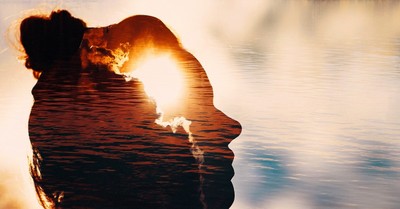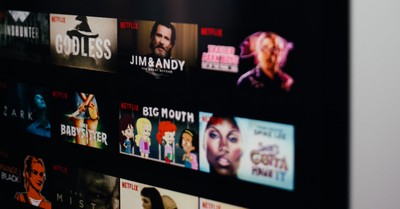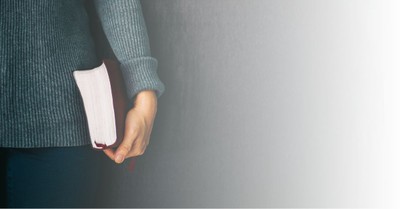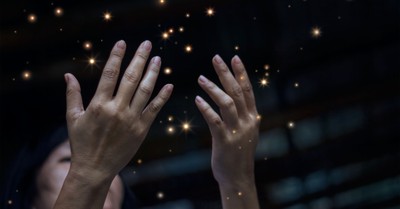Unmasking Halloween: Is it just harmless fun?
- Dr. J.L. Williams New Directions International
- Published Oct 20, 2005

It is fast approaching that day of the year when our children go through their annual Dr. Jekyll—Mr. Hyde metamorphosis from little cherubs to spooks, ghosts, goblins, ghouls, witches and vampires.
They will excitedly attend school Halloween carnivals where they will bob for apples, fish for prizes and prowl through a “haunted house” amidst shrieks and screams of fearful delight. Later they will go from door to door “trick or treating” in their neighborhood. They will be greeted by scowling pumpkin jack-o-lanterns, scary dangling skeletons, and flying witches on brooms.
They will hopefully be met by generous hosts who will fill their bags with candy, gum, cookies, popcorn and a host of other goodies that will make their next visit to the dentist a real nightmare! Yes, it’s Halloween time again!
It all seems like such harmless fun—but is it? I have had my own private war with Halloween for a number of years now. Frankly, I don’t think I’m really winning, but I will continue the fight! “But why?” you may be thinking. “Do you want to deprive those little kids of all that fun and excitement? It’s all just innocent, harmless fun!”
Fun? Perhaps. Innocent? Hardly! I enjoy fun as much as the next guy, as anyone who really knows me will quickly affirm. But I also know that not all fun is “innocent fun.” A lot of people’s fun is at someone else’s expense. For other twisted minds, “fun” has an element of perversion, like putting hallucinogenic drugs in candy or razor blades in apples! So there is FUN and there is fun.
Because of the historical roots of Halloween, I cannot see it as innocent, innocuous fun. It is a basic principle of life that the origin of something determines its nature. The Bible says, “Every good and perfect gift is from above, coming down from the Father …” (James 1:17). It also says that Satan masquerades as an “angel of light” (2 Cor. 11:14). He is the master counterfeiter! That means that he makes evil look good . . . perversion look pure ... and a lie look like the truth. He is a Master of his trade and he has had all of history to perfect it.
Halloween’s Historical Roots
It can be easily proven from history that Halloween predates the birth of Christ by several hundred years and is firmly rooted in paganism. There are three different historical streams that have gradually converged through the centuries to form what we now know as Halloween. Let’s briefly trace each one back.
Celtic Paganism:
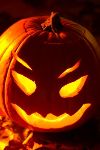
Even though these Celts were ruled by various kings, the real power behind the throne was in the hands of the “Druids.” They were a secret, bloodthirsty priestly society who ruled by terror, sorcery and witchcraft. Even the various Celtic kings feared their black powers.
The most important religious day for the Druids was the celebration of “Samhain, Lord of the Dead.” The Celtic New Year began on November 1st. The night before, October 31st, was the night to reverence Samhain. It was the time of the falling of leaves and general seasonal decay—so the appropriate time to celebrate the “Lord of the Dead.”
They believed that on that night the Spirit world came into its closest contact with the human world. As such, it was a night when the souls of the departed dead returned to their former homes to be entertained by the living (much like ancestor worship is practiced today by many religions).
It was also a time when demonic and evil spirits came out of their shadowy nether world. If proper food, shelter and provision were not provided, these evil spirits would cast spells, wreak havoc on man and beast, and generally torment the living! If the proper “treat” was not awaiting to appease them, then they would respond with an appropriate “trick”—thus our custom of “trick or treating.”
Others, in order to fool and evade the invading spirits, would themselves dress up and masquerade as evil spirits, witches, ghosts, and ghouls. Again we can see the origin of our custom of dressing up as fiendish characters and creatures.
The perverted climax of this dark night was animal and human sacrifice to placate this “Lord of the Dead.” It was carried out by the priestly Druids who would rip the hearts out of their victims and use the blood for religious rites. They would also use the entrails and other body parts to divine the future and forecast the New Year. The remains were then burned in “bone fires,” from which we get the popular “bonfire.”
Is this some fanciful interpretation of history? Even a secular source like Collier’s Encyclopedia accurately records Halloween as a “popular secular observance … derived from the rites of the Druids celebrating the day of Samhain, when the Lord of Death called together the souls of the wicked who had died during the past year” (Vol. 12, p. 196).
Clearly then, much of our current Halloween practices have their roots in this ancient pagan Celtic religion. Even though the Celts were eventually conquered, their pagan practices never were fully rooted out of Western Europe.
When our Puritan ancestors came to America, they were far too Biblically oriented to allow such occult practices. They knew that all forms of witchcraft were strictly forbidden by God as an abomination. However, in the 18th and 19th centuries, a host of our ancestors of Celtic origin emigrated to America from the British Isles. With them came many of their ancient pagan observances and practices, including Samhain, the Festival of the Dead, or Halloween. This pagan practice took firm root in American soil and has been a widely accepted cultural tradition ever since.
Roman Roots:
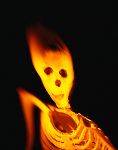
The Roman general Agrippa first built a Pantheon (temple for all of their gods) in 27 B.C. It was rebuilt by the Roman Emperor Hadrain in about A.D. 100 and dedicated primarily to “Cybele” the goddess of nature. Since it was a Pantheon, many other deities were also worshipped there Thus, the Pantheon became the principal place of worship for the Romans and the place where they went to honor and pray for their dead.
When Rome fell to the invading barbarian horde of Gauls, they, too, overran the Pantheon, along with everything else. Gradually, it fell into disrepair. In A.D. 607 it was recaptured by the Emperor Phocas, who gave it as a gift to Pope Boniface IV. Boniface then re-consecrated and dedicated the Pantheon to the Virgin Mary.
So, from A.D. 609, it was used as a Christian church (Santa Marie Rotunda). It was an easy—but tragic—transition from ‘Cybele’, goddess of nature, to Mary, mother of Jesus. Every May, a major celebration was held in the Pantheon to the Virgin Mary.
Medieval Christianity:
Since the Church was embraced by the Roman Emperor Constantine and made the official State Religion (Edict of Milan in A.D. 313), there has been a constant battle to keep the Church free from the influence of the pagan culture around her. Too often, as history has proven, while the Church had sought to “Christianize” the culture, she has more often been enculturated by her pagan surroundings!
Thus, syncretism (the reconciling of differing beliefs in religion) of alien and hostile ideologies has always been the great enemy of the faith. There are few more tragic examples than Halloween.
During the Medieval Period, or Dark Ages, the Church had sought to increase its influence over many pagan practices—sometimes more successfully than others. Many pagan superstitions and practices that the Church had sought to eradicate began to reappear in Europe during this period. Involvement in witchcraft again became widespread.
One of the most important aspects of witchcraft was the number of celebrations held each year called “Witches’ Sabbaths.” The most important of those was known as the “High Sabbath,” or the “Black Sabbath,” which occurred on October 31st.
It was generally a night of feasting and revelry. It was that feast that gave us many of the common paraphernalia of our Halloween like witches on broomsticks, black cats, death’s skulls and pumpkins. So much of our Halloween folklore today stems directly from this High Witches’ Sabbath that was celebrated in Europe during the Dark Ages.
There is one more tributary of the historic stream that feeds Halloween. It is the one from which the name “Halloween” itself comes.
All Saint’s Day:
Very early in the life of the Church, there was a movement to honor and 
Gradually, there were more saints than there were individual days to honor them. The solution seemed to be to consolidate the remembrance of all of them into one special day called “All Saints Day.”
Remember that I said earlier that every May a celebration was held in the Pantheon in honor of the Virgin Mary? In A.D. 705, Pope Gregory III changed the celebration of All Saints Day to November 1st. In A.D. 834, Pope Gregory IV extended the celebration to the entire Roman Church. This was an apparent attempt to coincide with the ancient Druidic festival of “Samhain.” The Church wanted to accommodate itself to the recently conquered German Saxons and Norsemen of Scandinavia. So it baptized yet another pagan celebration.
Thus, this special Church day of remembrance was called “Allhalowmas.” It was easily shortened into “All Hallow” for the “hallowed ones” or “saints” who were being remembered. The night before, October 31st, evolved into “All Hallow Evening.” It, too gradually was shortened to “All Hallow Eve,” then came the contraction “Hallows E’en,” and finally to its current form of “Halloween.”
So a day that started out as simply a remembrance of the saints progressed to a reverence for the saints and finally ended in a worship of the saints.
There was an unholy wedding then of the “saints” and “Samhain” … a union of “light” and “darkness” … a co-mingling of the “cup of the Lord” with the “cup of demons” (I Cor. 10:16-21).
These three religious and historic streams, then, have converged to form the polluted river of Halloween. Again I must say that the ultimate fountainhead of Halloween is Satan.
Innocent Fun?
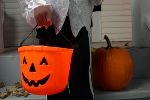
Satan is the master of deceit and disguise. His favorite deception is to convince educated people that he really does not exist. What better way for him to perpetrate the illusion that neither his person nor power exist than to make it all “innocent fun.”
Anyone who has spent time on the mission field, as I have, will know beyond a shadow of a doubt that the whole realm of evil spirits and the demonic are not something to be played with. To put them in the same category as fairy tales, make-believe and mythology is spiritual suicide. This is the very real and active fallen realm of “principalities, powers, rulers of darkness and spiritual forces in heavenly places” that scripture tells us to stand against in the whole armor of God (Eph. 6:12).
When God gave the Promised Land to the early Israelites, He clearly warned them: “When you enter the land which the Lord your God gives you, you shall not learn to imitate the detestable things of those nations. There shall not be found among you anyone … who used divination, one who practices witchcraft, or one who interprets omens, or a sorcerer, or one who casts a spell, or a medium, or a spiritist, or one who calls up the dead. For whoever does these things is detestable to the Lord” (Deut. 18:9-12).
Likewise, we Christians are clearly commanded to “abstain from every appearance of evil” (I Thess. 5:22) — which I believe includes all of the trappings of Halloween.
Whenever the apostles of Christ met with people involved in fortune telling, witchcraft and the occult, the Holy Spirit firmly, swiftly and decisively dealt with them (Acts 8:9-23). When spiritual revival came to the ancient pagan city of Ephesus through the ministry of Paul, all books and paraphernalia related to the occult were destroyed: “And many of those who practiced magic brought their books together and began burning them in the sight of all; and they counted up the price of them and found it fifty thousand pieces of silver. So the word of the Lord was growing mightily and prevailing” (Acts 19:19-20).
The enterprising merchants of Ephesus had capitalized on the economic opportunities of the occult and witchcraft just as our contemporary businessmen have exploited Halloween into a multi-million dollar annual bonanza! Santa Claus, the Easter Bunny and Halloween witches are their best friends. History has proven that once something becomes culturally acceptable and economically profitable, it will remain and flourish—regardless of its origin—unless true spiritual revival comes to root it out.
CLICK to read Part Two: Tips on what parents can do.
Visit New Directions International at www.newdirections.org














